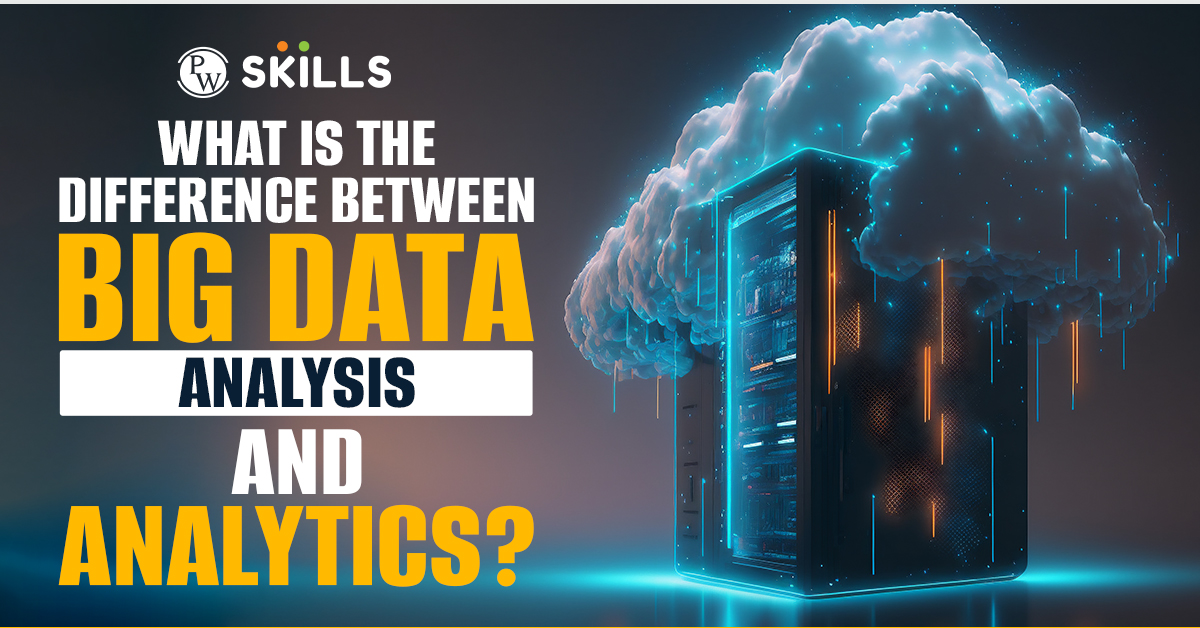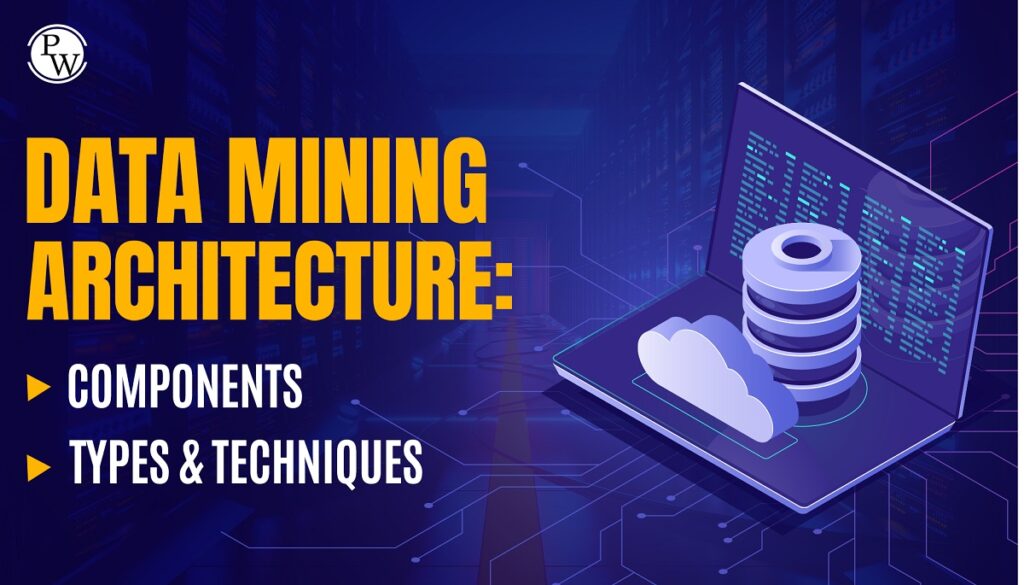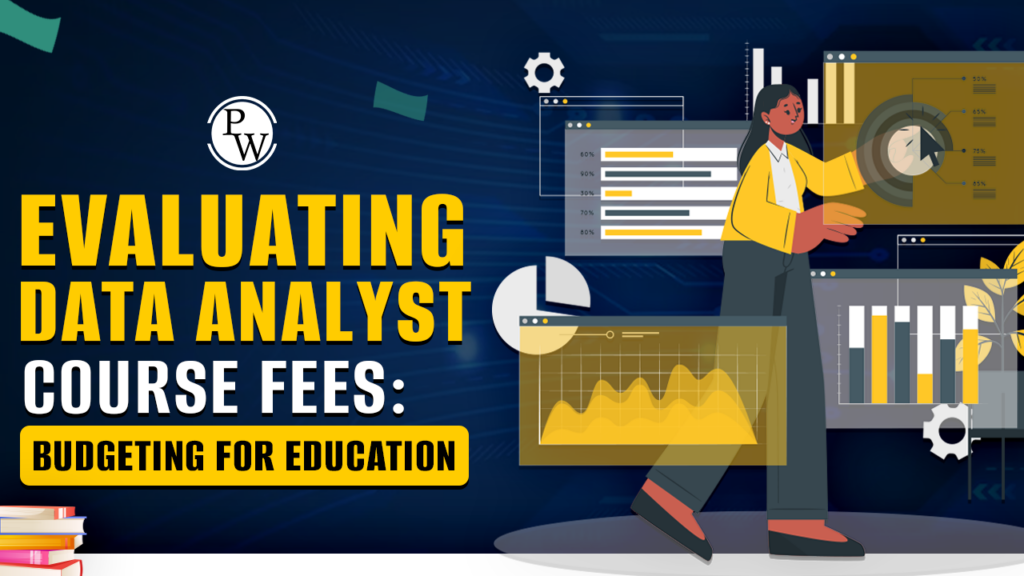Data analytics and big data analysis are two big terms used in this data-driven world. Let us gather some knowledge about them in detail here.
Difference between Data Analytics and Big Data Analysis: Data analytics can be applied to datasets of different sizes, including smaller datasets that do not necessarily fall into the “big data.”

On the other hand, big data analysis specifically focuses on handling and extracting insights from massive and complex datasets characterised by the three Vs: volume, velocity, and variety. Big data analysis often requires specialised tools and technologies to manage and process vast amounts of data efficiently.
Together, data analytics and big data analysis contribute to the data-driven decision-making processes of organisations across different industries.
Learn Data analytics with PW Skills
Hurry and get ready to dive into the world of data analytics with us and learn all the major concepts with 24×7 doubt support, 100% placement assistance, and industry level experts. The course will help you learn some major trending technologies such as pandas, mySQL, matplotlib, AWS, PowerBI, etc.
Candidates who complete all the assignments and quizzes with minimum cut-off marks will also receive course completion certificates. And the best part is that you can practice everything online on PW Lab. So come join us for an awesome adventure of learning.
What is Data Analytics?
Data analytics is a broad field within data science. Data analytics refers to the process of inspecting, cleaning, transforming, and modelling data to extract useful information, draw conclusions, and support decision-making. It consists of operations like analyzing data sets using a variety of techniques and tools, extracting meaningful insights, and identifying trends or patterns.
The primary goal of data analytics is to extract useful information from data so that it can be used to inform business decisions, improve processes, and maximize performance.
To extract useful insights from data, the data analytics process typically involves a systematic series of steps. While specific methodologies can differ, a common framework for the standard data analytics process includes the following stages:
- Define the problem or objectives: Clearly define the business problem or objective that data analytics seeks to solve. Understand the scope of the analysis and identify the key questions to be addressed.
- Data Collection: Identify and collect relevant information from various sources. Addressing issues like missing values, duplicates, and errors will help to improve data quality.
- Data Cleaning and Preprocessing: Prepare the data for analysis by removing outliers, missing values, and inconsistencies. Transform and format the data so that it is suitable for analysis.
- Exploratory Data Analysis (EDA): Explore the data using statistical measures and visualizations. Identify patterns, trends, and relationships within the data. Generate hypotheses and insights that can guide further analysis.
- Descriptive analytics: Use descriptive statistics to summarize key data features. Give a quick overview of the data’s characteristics, such as mean, median, mode, and variability.
- Inferential analytics: This involves using statistical techniques to draw conclusions about a population based on a sample of data and make inferences regarding relationships within the data.
- Predictive Analytics: Create and train machine learning models to forecast future outcomes using past data. Examine and validate the model’s performance with testing data.
- Prescriptive Analytics: Recommend actions or strategies based on the insights gained from data analysis. Provide decision-makers with guidance on optimizing outcomes.
- Data Visualization and Reporting: Communicate findings effectively through visualizations, charts, and reports. Use dashboards and other tools to present insights in a clear and understandable manner.
- Implementation and Monitoring: Implement recommended strategies or actions based on the analysis. Monitor the results and iterate on the analysis as needed.
- Feedback Loop: Incorporate feedback from stakeholders to improve the accuracy and relevance of future analyses. Continuously refine and enhance the data analytics process.
This iterative process allows organizations to gain valuable insights from data, make informed decisions, and drive continuous improvement. Keep in mind that the specific steps and techniques employed may vary based on the nature of the data and the goals of the analysis.
Also Read: Data Analysis Techniques in Research: Methods, Tools, Examples
What is Big Data Analysis?
Big data analysis is the process of examining and extracting meaningful insights from large and complex datasets that are beyond the capabilities of conventional data processing tools and methods.
Big data analysis is widely used in a variety of industries, including finance, healthcare, and marketing, to gain valuable insights, improve decision-making, and identify areas for innovation. It has played an important role in data-driven decision-making and digital transformation.
The three Vs of big data are volume, velocity, and variety.
- Volume: Big data involves large amounts of data, which can range from terabytes to petabytes or even more. This could include massive amounts of data generated by a variety of sources, including social media, sensors, transaction records, and more.
- Velocity: Data is generated quickly in big data environments. The real-time or near-real-time nature of data flow necessitates efficient and rapid processing in order to obtain timely insights. High-velocity data sources include social media posts, sensor data from IoT devices, and financial transactions.
- Variety: Big data exists in a variety of formats and types. It consists of three types of data: structured data (e.g., databases), semi-structured data (e.g., XML files), and unstructured data. Analyzing and making sense of such diverse data types presents challenges that traditional relational databases may not be able to address effectively.
To analyze big data, organizations frequently use advanced analytics tools, technologies, and techniques, including:
- Distributed computing: To efficiently handle the massive volume of data, big data analysis frequently involves distributing processing across multiple servers or nodes. Apache Hadoop and Apache Spark are popular tools for distributed computing in big data environments.
- Data Storage Solutions: Traditional relational databases may be insufficient for storing and managing large amounts of data. NoSQL databases, data lakes, and distributed file systems are frequently used to manage diverse types and large amounts of data.
- Machine Learning and Predictive Analytics: With big data, organisations can use machine learning algorithms to identify patterns, trends, and relationships. Predictive analytics models can be developed to forecast future outcomes using historical data.
- Data Mining and Text Analytics: Data mining techniques are frequently used in big data analysis to discover hidden patterns and insights. Text analytics extracts useful information from unstructured text data, such as social media posts, emails, and documents.
- Stream Processing: High-velocity data is analysed, and insights are derived in real-time using stream processing tools and frameworks.

Differences between Big Data Analysis and Data Analytics
Here are some major differences between big data analysis and data analytics in the table given below.
| Difference Between Big Data Analysis and Data Analytics | |
| Big Data Analysis | Data Analytics |
| The nature of the process is a large volume, varied, and high-speed | The nature of the process is smaller volume and structured data |
| The data is either unstructured or semi-structured | The data is fully structured |
| The tools used are Hadoop, Spark, Hive, etc. | The tools used are R, Python, SAS, SQL, etc. |
| The Applications of the process are in predictive analytics, Machine learning, Real-time analysis | The application of the process is in descriptive analytics, Statistical Analytics, and Data Visualization |
For Latest Tech Related Information, Join Our Official Free Telegram Group : PW Skills Telegram Group
Difference between Data Analytics and Big Data Analysis FAQs
Are big data and data analytics the same thing?
Big data and data analytics are two buzzwords that are commonly used interchangeably. However, they are not the same thing, and their natures and functions differ. Big data is distinguished by its size, speed, and variety. It entails gathering, storing, and processing large amounts of information from various sources.
What is data analytics, and how does it work?
Data analytics is the process of analysing data in order to extract useful information from a given dataset. These analytics techniques and methods are typically used with big data, but they can be applied to any data set.
What is big data analytics and what are its benefits?
Big data analytics is the application of advanced analytics to large collections of structured and unstructured data in order to generate valuable business insights.




